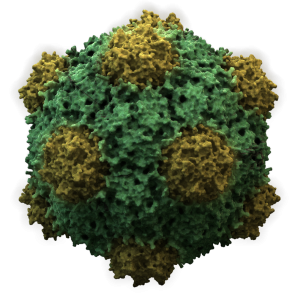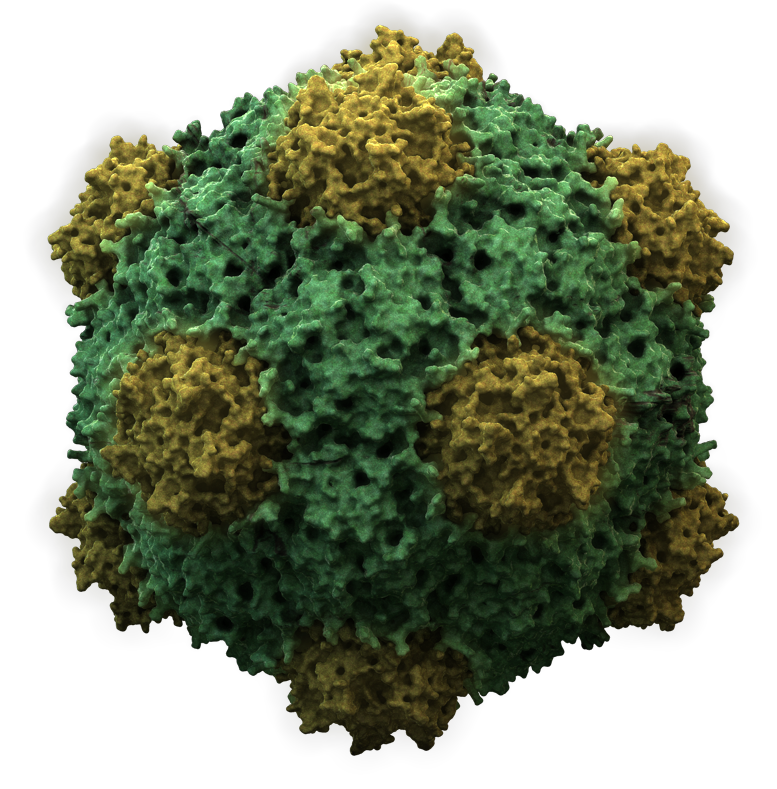Researchers at Dartmouth College and Case Western Reserve University have successfully demonstrated the anti-tumor effects of a plant virus, a study published in Nature Nanotechnology reports. A plant virus was injected into a lung tumor animal model, leading to increased immune-mediated destruction of malignant cells [1].
 The virus in question is the Cowpea mosaic virus (CPMV), a commonly studied plant virus due to the virus’ immense practicality in nanotechnology applications, including flexibility of carrying capabilities and scalability [2].
The virus in question is the Cowpea mosaic virus (CPMV), a commonly studied plant virus due to the virus’ immense practicality in nanotechnology applications, including flexibility of carrying capabilities and scalability [2].
In an active cancer mouse model, injection of CPMV in a cocktail of other known substances switched on the immune system to destroy the lung or skin melanoma. Furthermore, these cured mice were challenged again with a follow-up melanoma injection, with the result being 4 of 5 mice being cancer-free.
Each day, mutations occur that lead a cell down the path of becoming cancerous. These mutations are a simple statistical phenomenon—the genetic machinery we use to replicate our genes from cell to cell has a very low error rate. However, many cells divide at astronomically high rates, meaning that errors occur regularly.
One of the mechanisms by which these cells are prevented from advancing further is through vigilant surveillance by the immune system, which manages to detect and destroy the vast majority of these would-be cancer cells.
While the body’s own immune system is highly effective at this stage, it becomes drastically less so once a tumor actually develops. The tumor itself changes the surrounding environment to make it more suitable for the tumor and less suitable for the immune system, helping to ensure survival and growth.
These changes to the environment are what CPMV is thought to disrupt. In this case, CPMV is used as an adjuvant—a compound that can give the immune system a kick-start, so to speak, allowing the body’s own defenses to successfully destroy the cancerous cells.
While these results are promising, further studies are needed to determine safety and efficacy in humans, as well as potential identification of which component of the virus that is allowing for these potent anti-tumor benefits.
- P. H. Lizotte, A. M. Wen, M. R. Sheen, J. Fields, P. Rojanasopondist, N. F. Steinmetz, S. Fiering. In situ vaccination with cowpea mosaic virus nanoparticles suppresses metastatic cancer. Nature Nanotechnology, 2015; DOI: 10.1038/nnano.2015.292
- F. Sainsbury, M.C. Canizares, G.P. Lomonossoff. Cowpea mosaic Virus: The Plant Virus-Based Biotechnology Workhorse. Annual Review of Phytopathology, 2010; DOI: 10.1146/annurev-phyto-073009-114242
Laeth George is a first-year medical student at The University of Arizona College of Medicine – Phoenix. He graduated from The University of Arizona in 2015 with a Bachelor of Science in Physiology. He is passionate about spreading scientific knowledge and ideas to others. More specifically, Laeth is interested in advances in understanding disease pathology and innovations in medical therapies. If you have comments, questions, or recommendations, please feel free to contact him at laethgeorge[at]email.arizona.edu.

